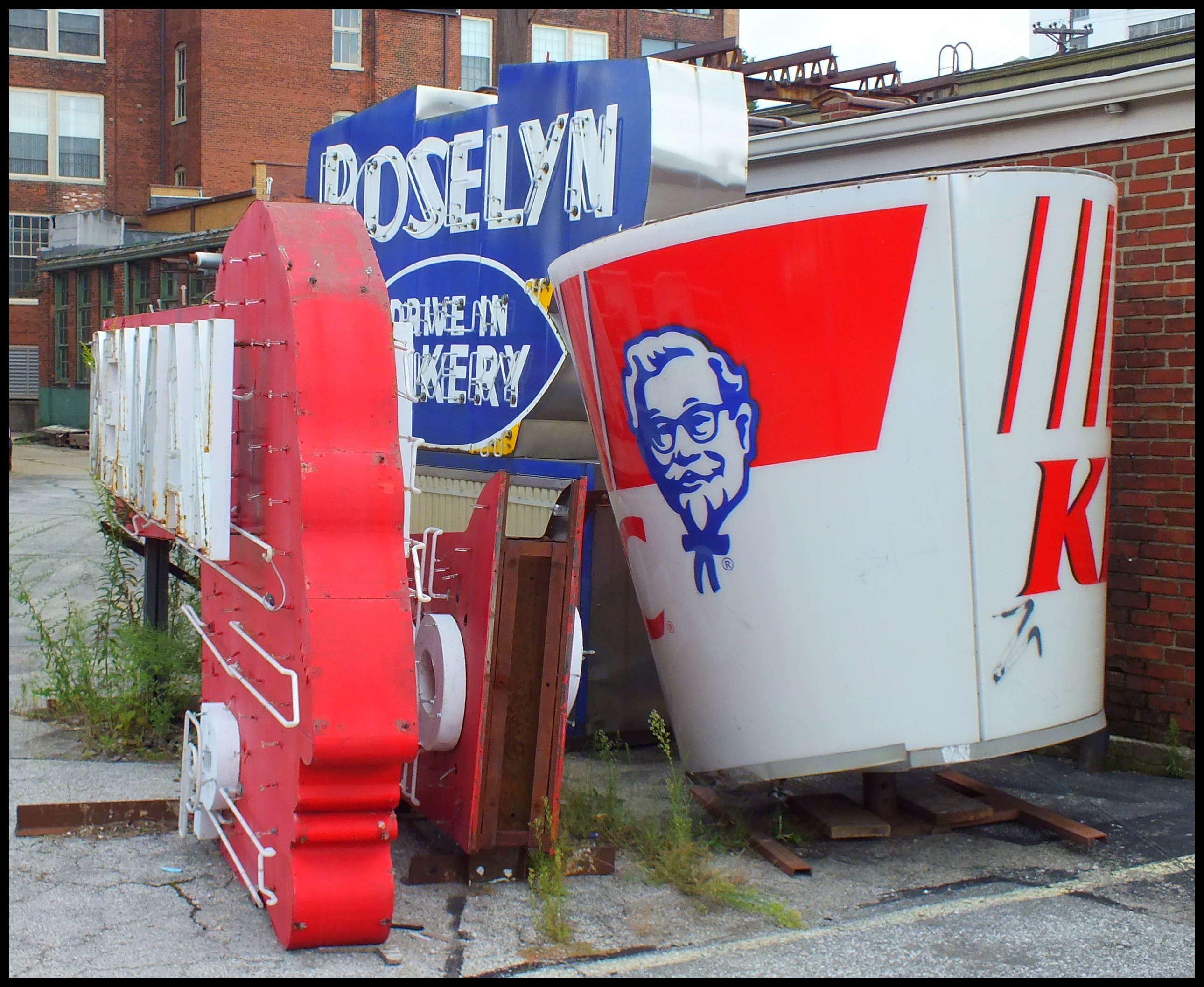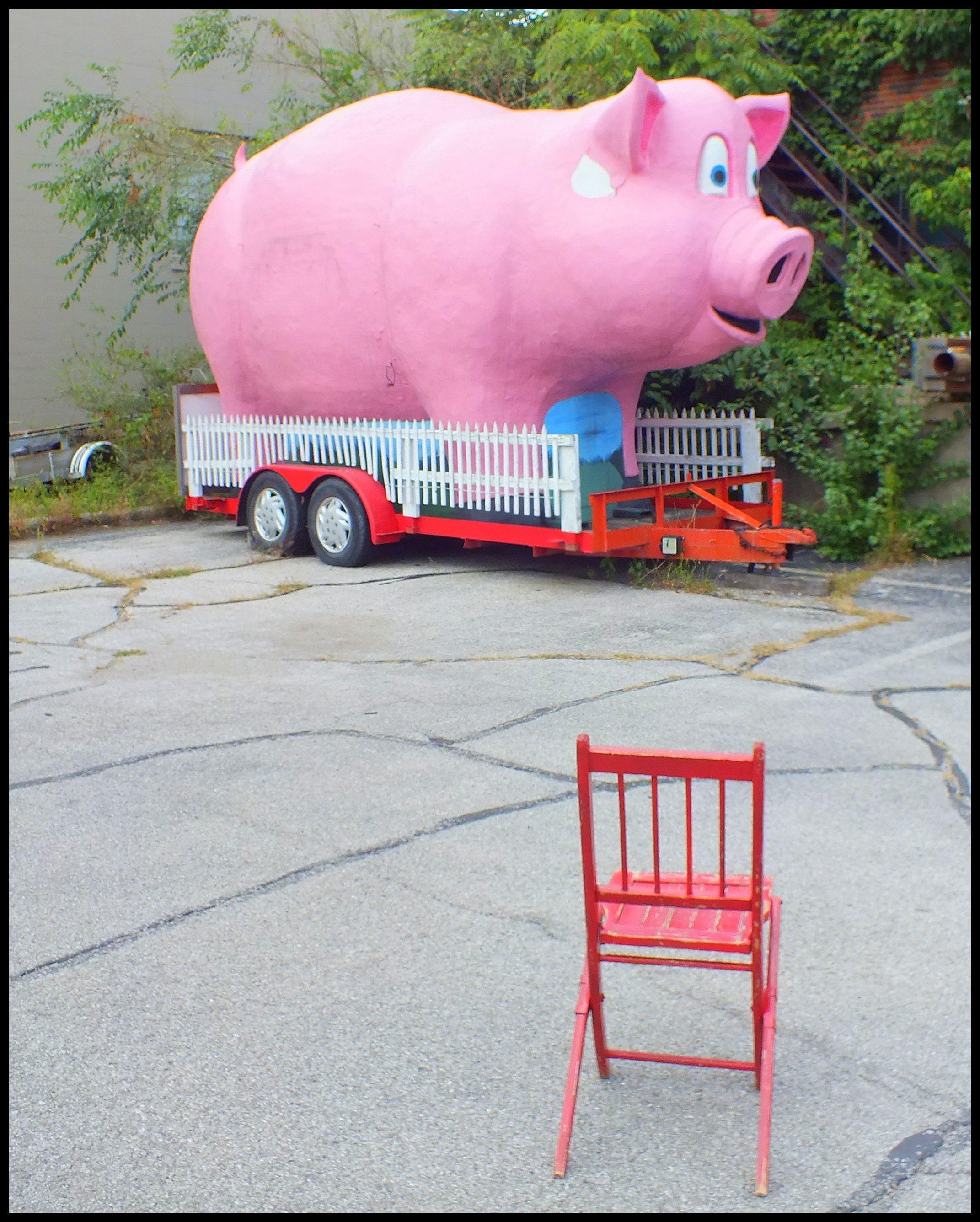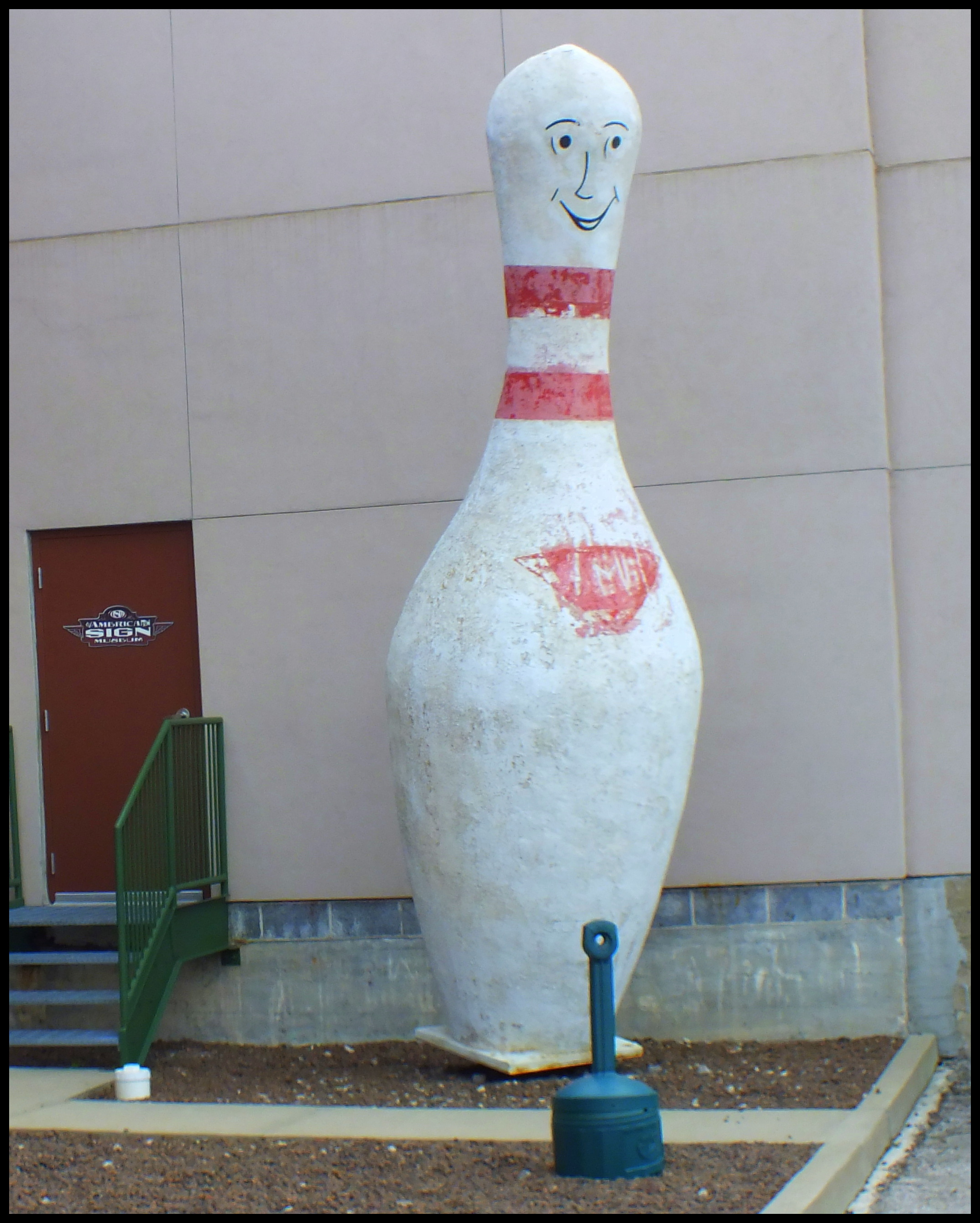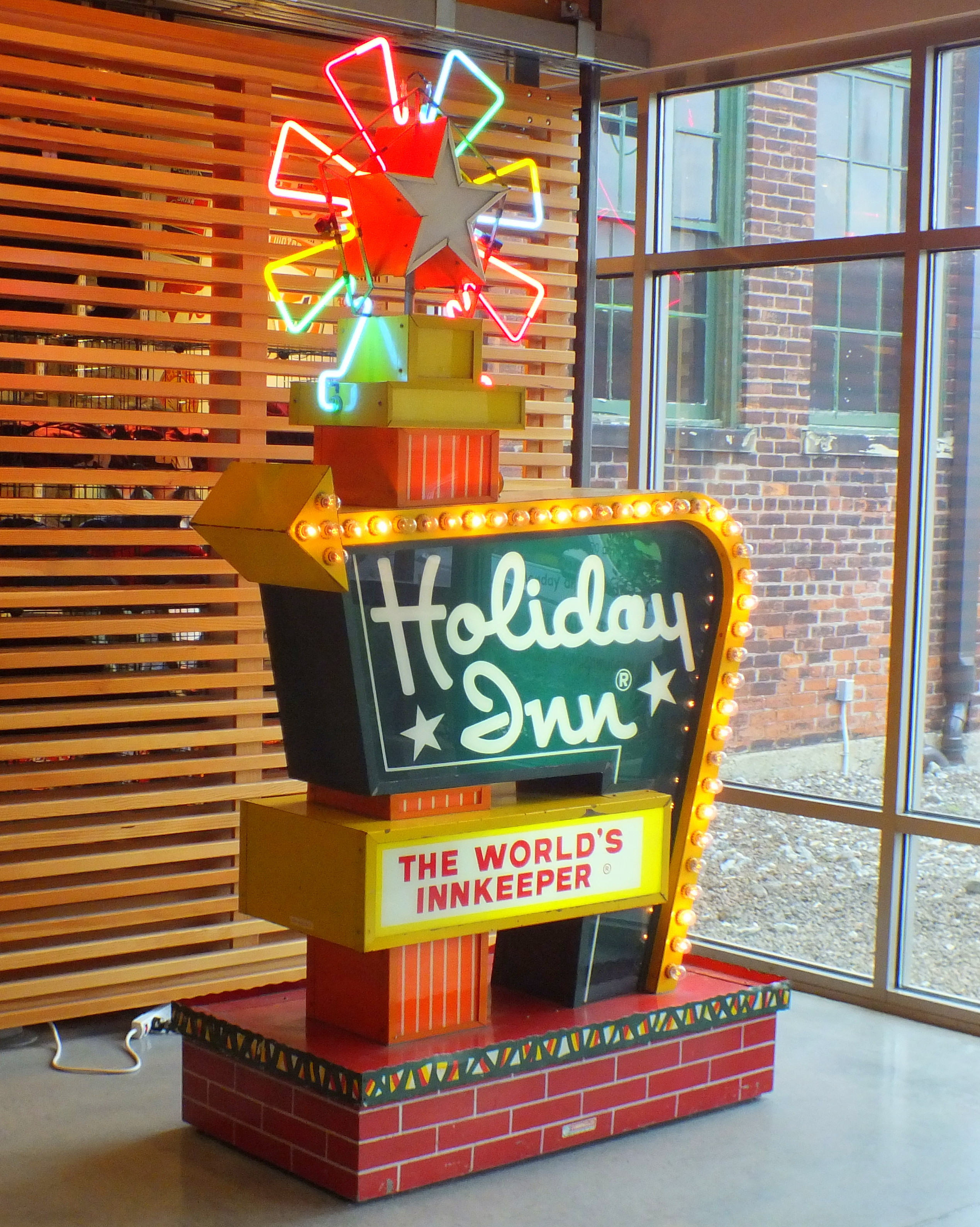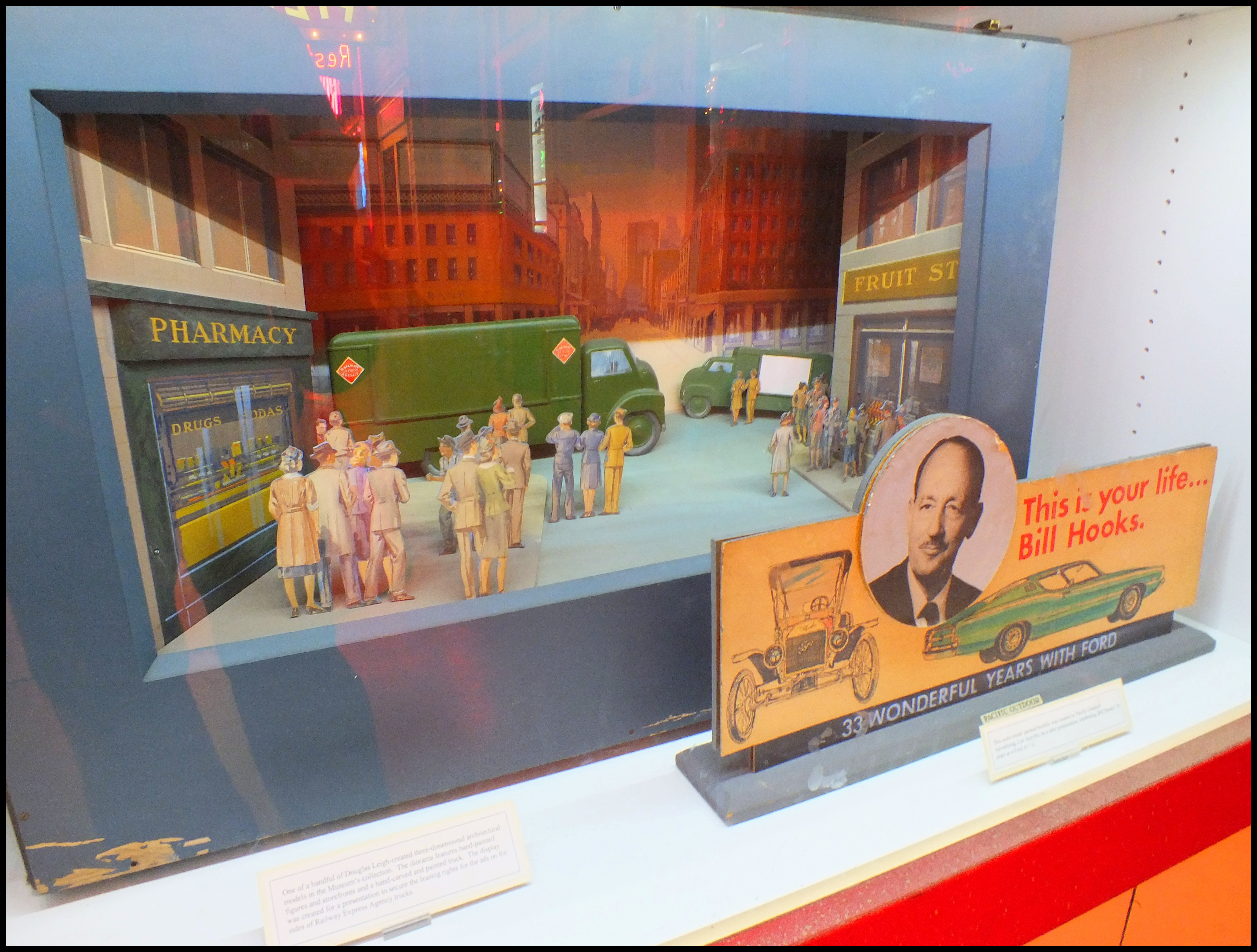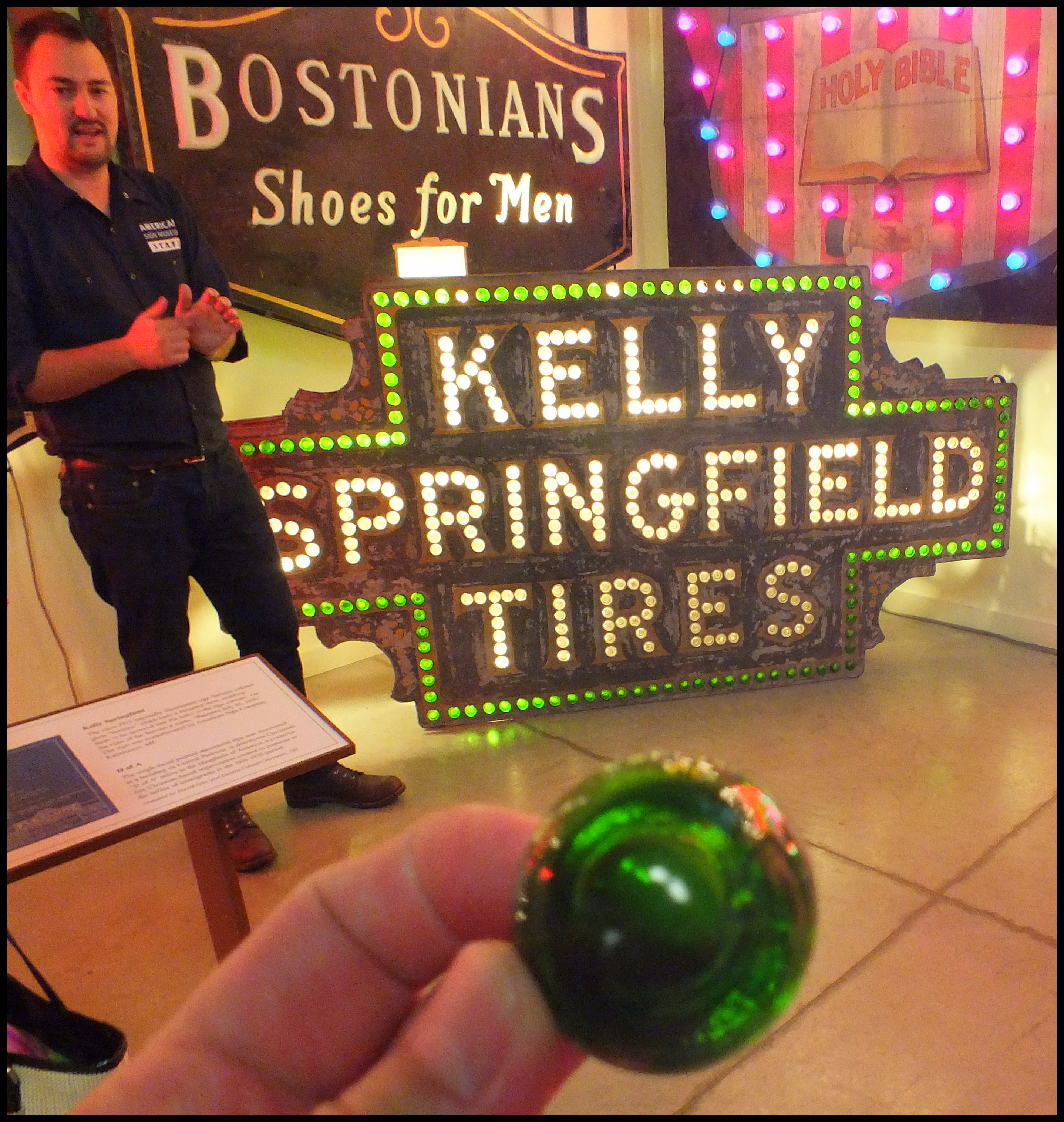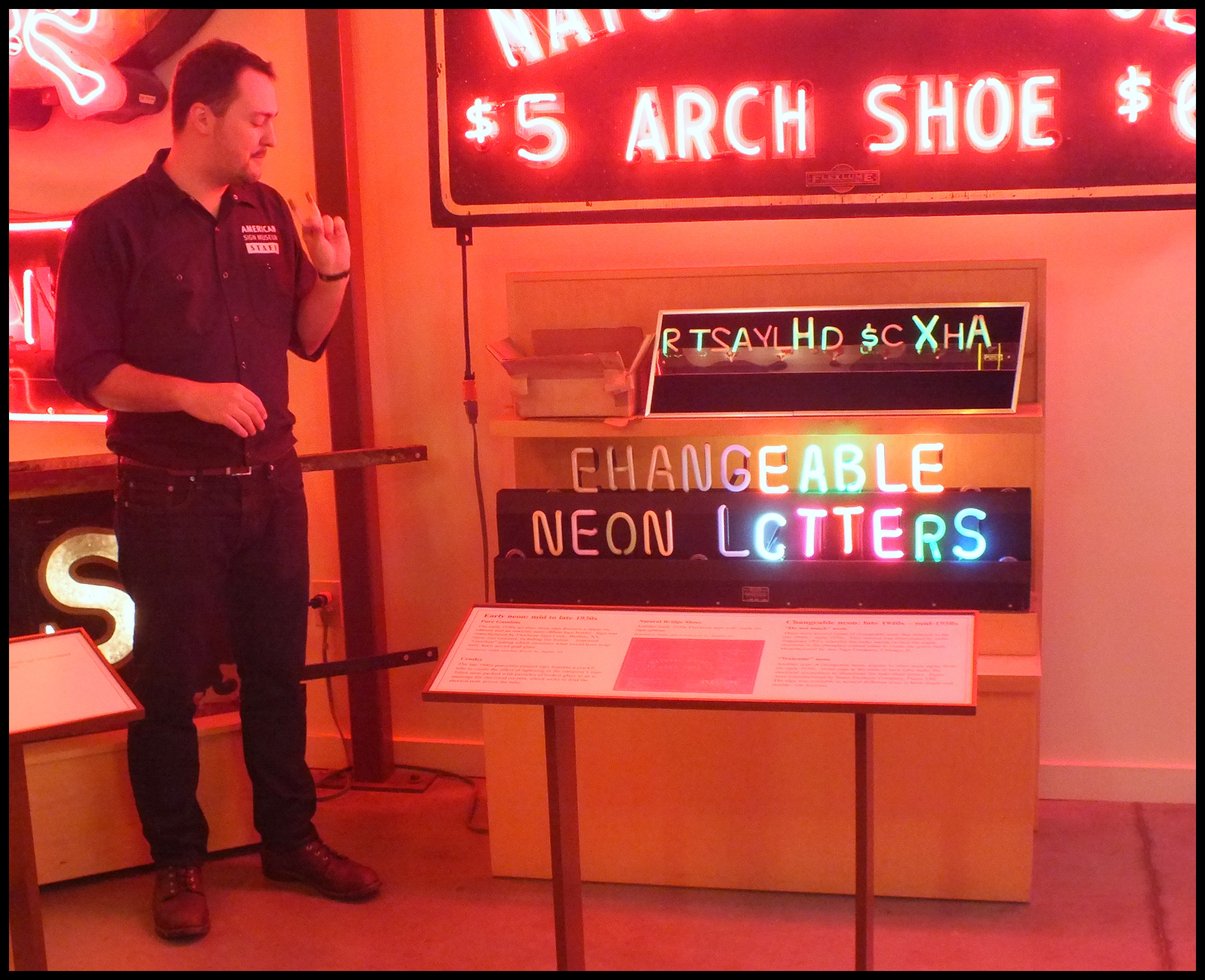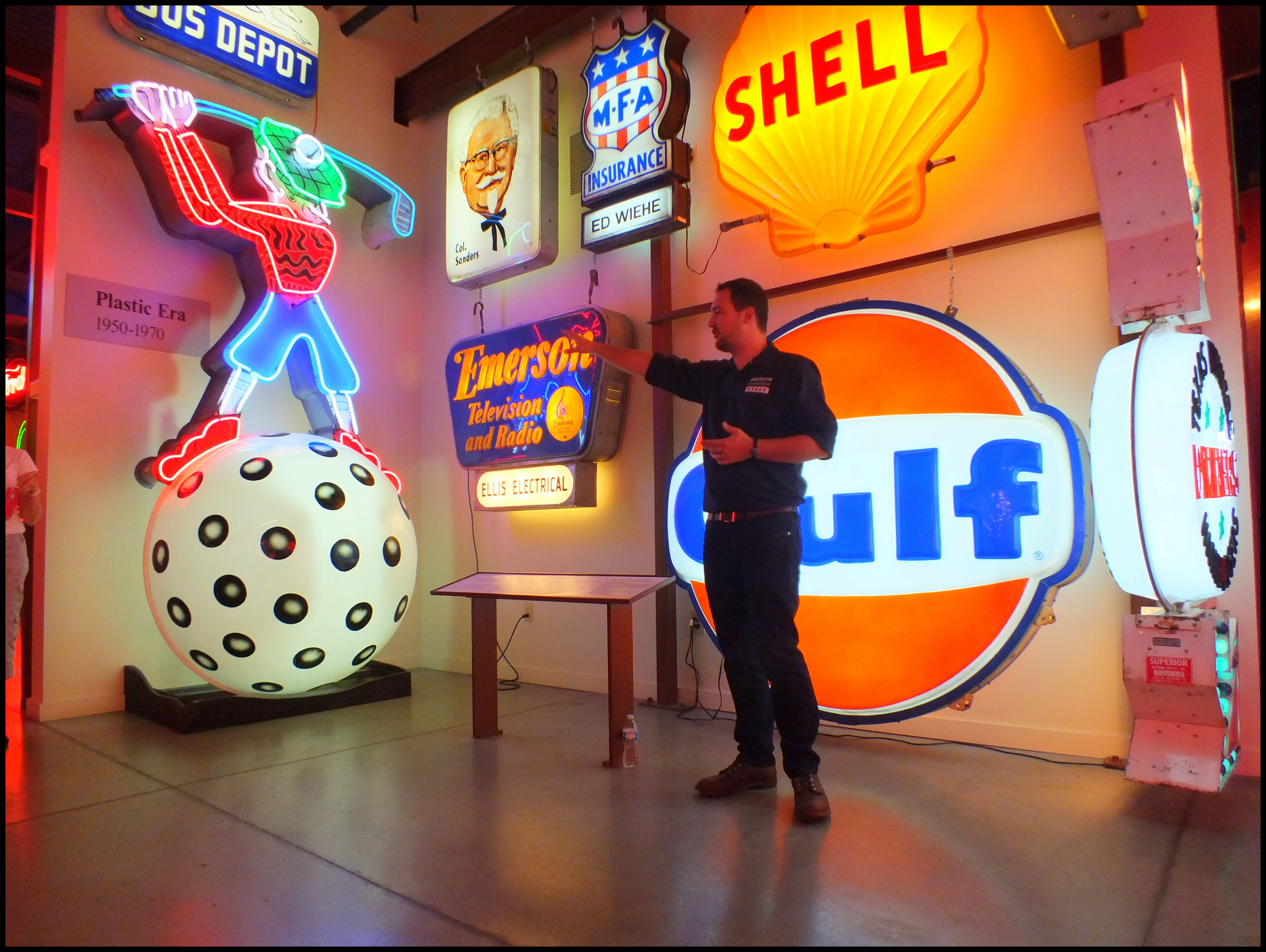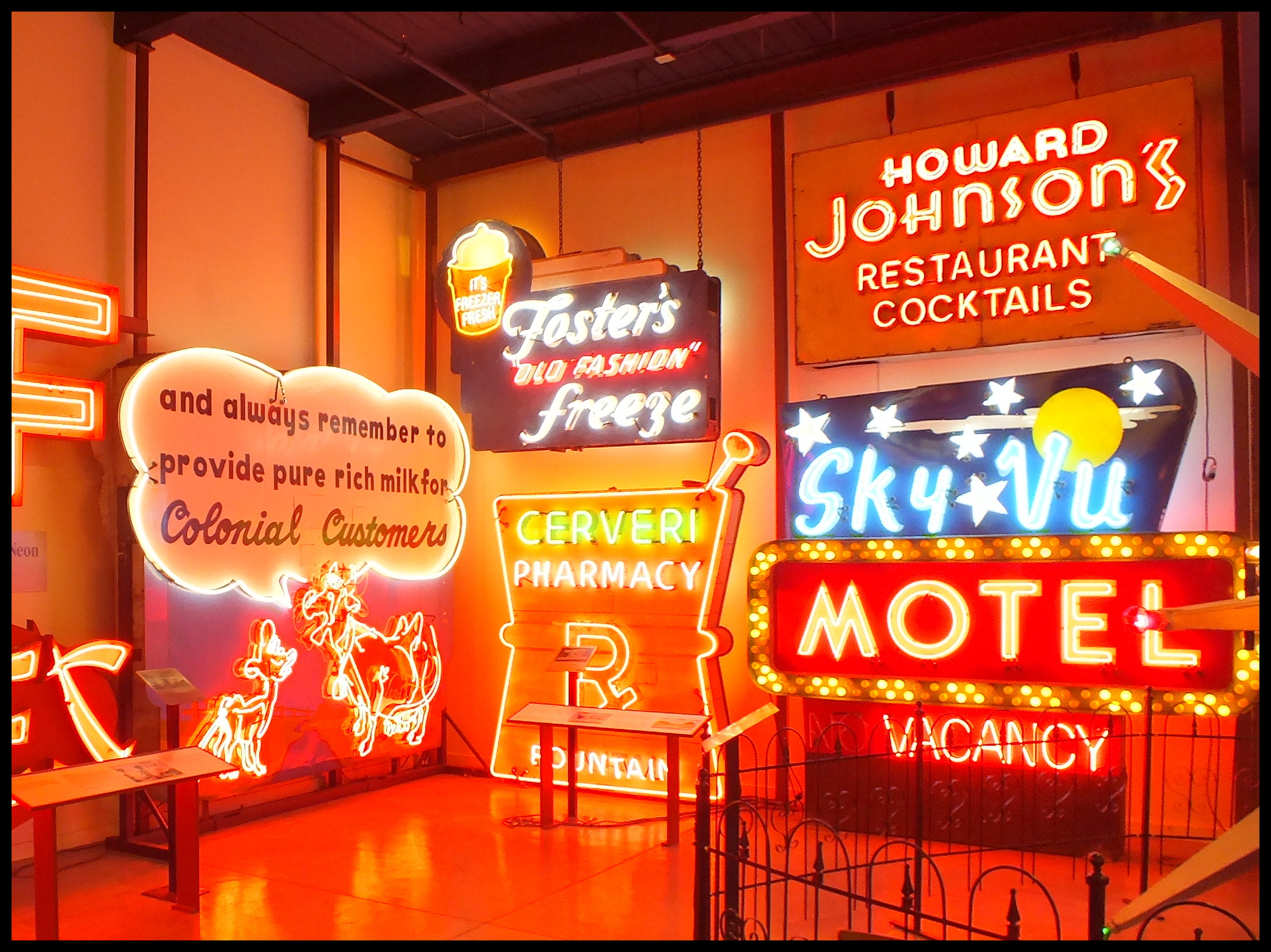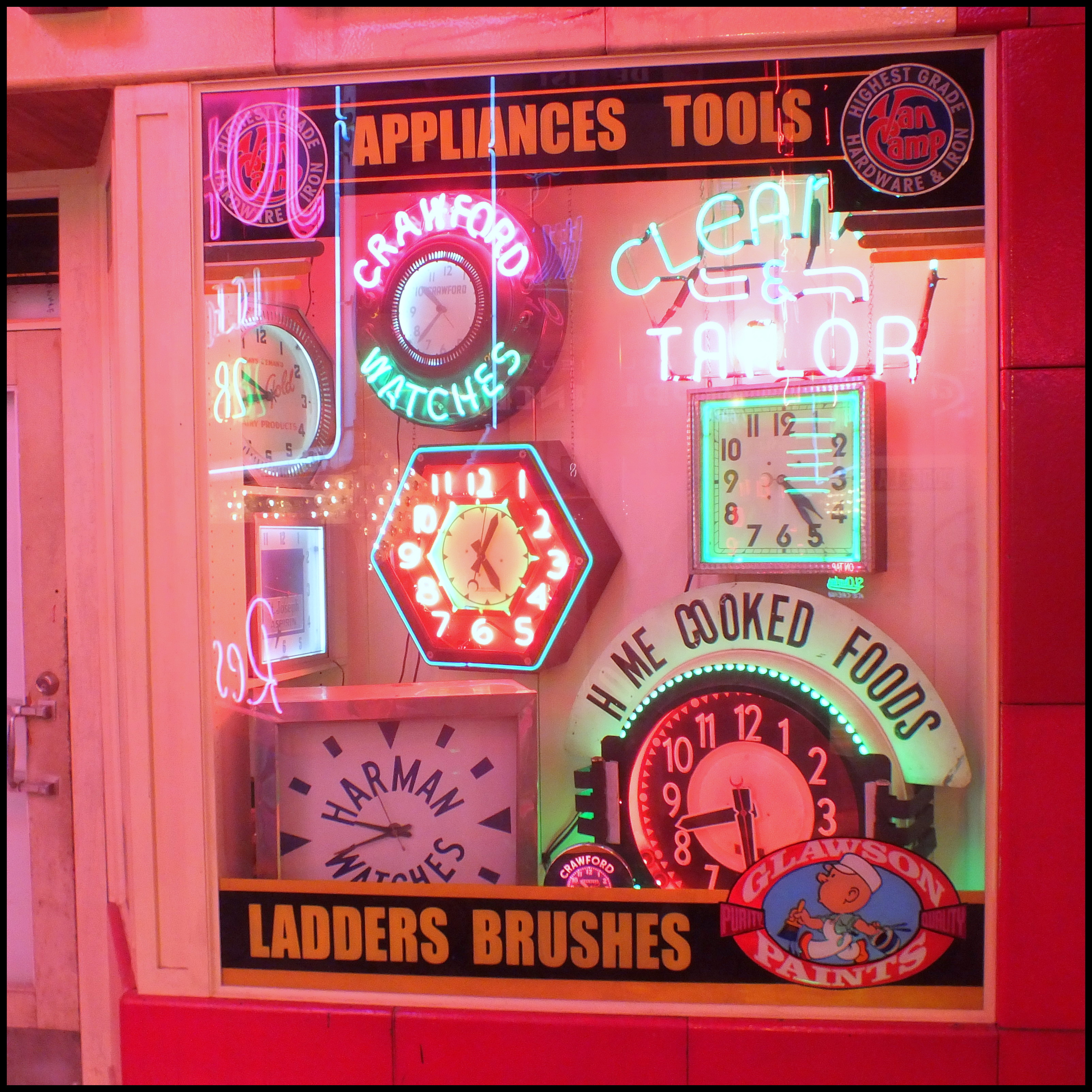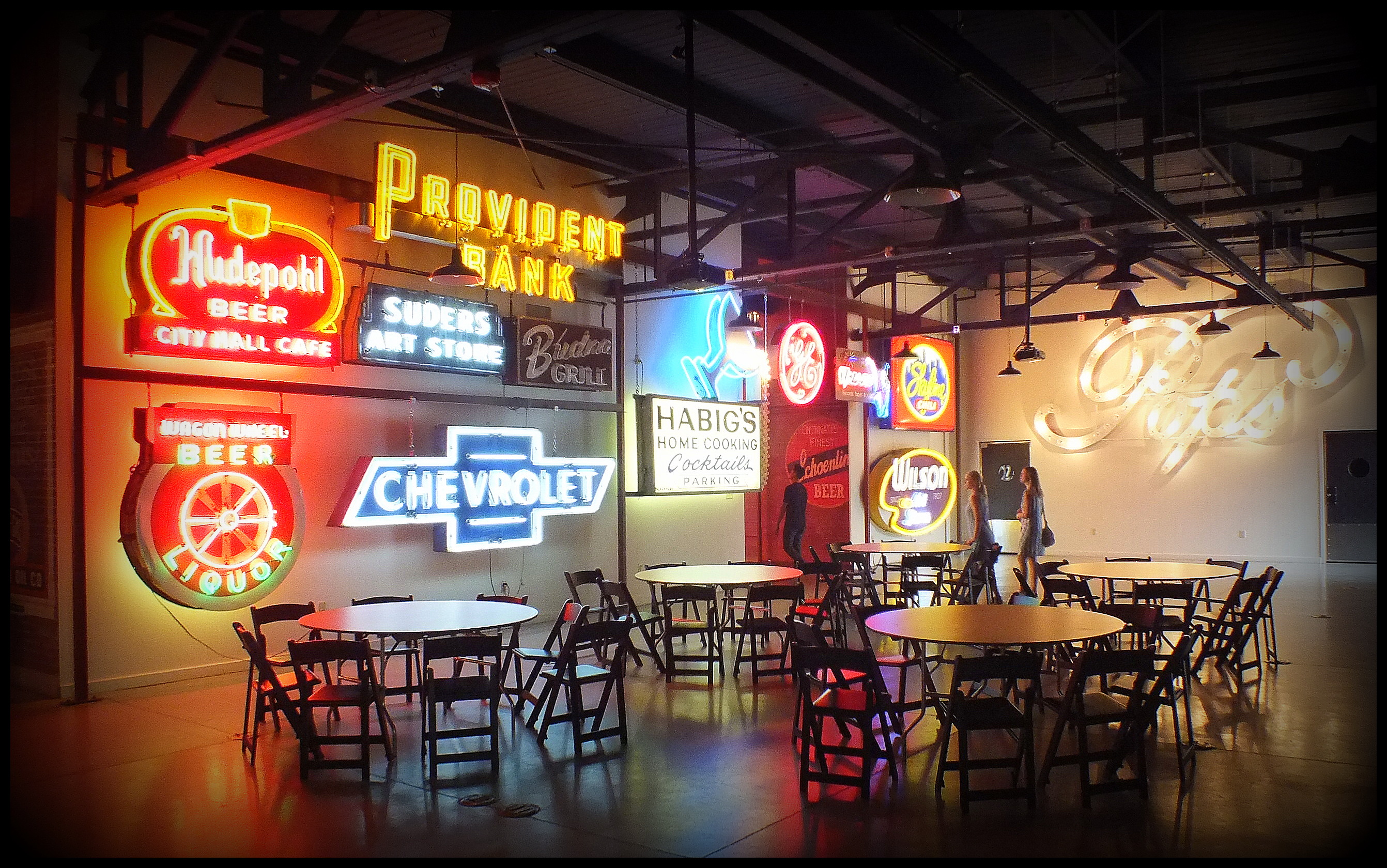The American Sign Museum is located in an old parachute factory in the Camp Washington neighborhood of Cincinnati.
Signs, in various stages of decay, line the parking lot.
We arrived at 1:30, which gave us a half hour to wander about before the guided tour began.
The museum is divided into six main areas. The first is filled with different letter and styles used in signs over the years.
Another room featured pre-lighted sign designs. These particular Burma-Shave signs were used as floorboards in the attic of the company owner.
Throughout the museum there were sign painter kits and samples. Here are two of the samples that salesman would show to potential customers.
Big Boy statue styles changed based on franchise and age. This older model has a slingshot in the back pocket and hasn’t, like some of the recent ones, been slimmed down. Others have checkered overalls and black or brown hair.
These signs were manufactured in the 1910s and 1920s. The earliest electric signs were lit with light bulbs. I’m holding one of the glass inserts that gives the Kelly Springfield its color and points of light. That’s our guide on the left.
We found out that the different colors in neon signs are created with different gases. In other words, not all neon signs use neon. Neon gives off an orange light, hydrogen a red light, helium a yellow light and mercury a blue light. Green is created by using yellow glass with mercury gas.
The candy sign on the upper left is stained glass. The Ford sign is a very early neon sign from the 1930s.
The Crosley sign has bits of broken glass in the tube that interrupted the electrical current and created the random flash effect.
Neon has largely been replaced with back-lit plastic signs. At first, these were rectangle or square, but then vacuum forming was used to create shapes.
Two examples of vacuum forming molds are on the wall. The “O” was used in a Kroger sign.
The Coke bottle was used at this restaurant, among other places.
The crates on the right are neon sign shipping packages. The Sputnik-shaped sign was displayed above a strip mall in Anaheim, California from 1962 until the mid-1990s when it was removed in an effort to clean up the “blight” around Disneyland.
The largest area in the museum was designed to show signs in their normal context.
The globe with the cars is from an Earl Scheib auto painting franchise in Compton, California. It sat next to the L.A. Freeway for years, and comes complete with a bullet hole.
One side of the McDonald’s sign has been restored to its original appearance while the other was left to show what it looked like when it was replaced. The “15c” was replaced with an arch and the number of hamburgers sold changed dramatically. It’s from Huntsville, Alabama, where it was in use from 1963 to 2008.
The museum can be rented for weddings or other functions. The back room contains the sides of two barns with original signs painted on them.
And a wall of signs from local businesses, including the Wagon Wheel, where Pete Rose met his first wife (or something like that) and the first Chevy dealer in Cincinnati.
The place was visually stunning. The tour was informative. If they get the funding to repair the other half of the building, the museum will double in size. This was one of the coolest museums I’ve ever visited.


